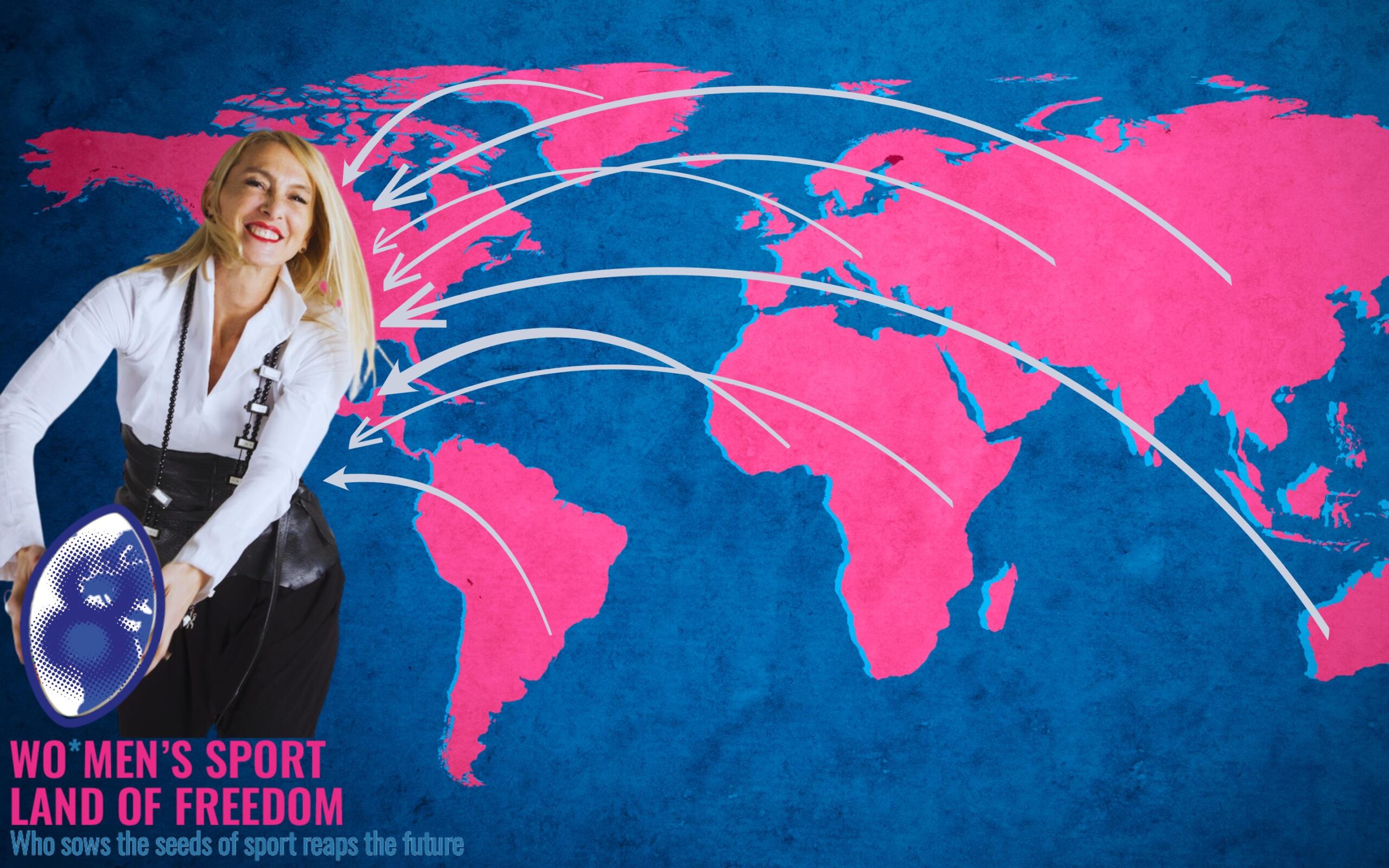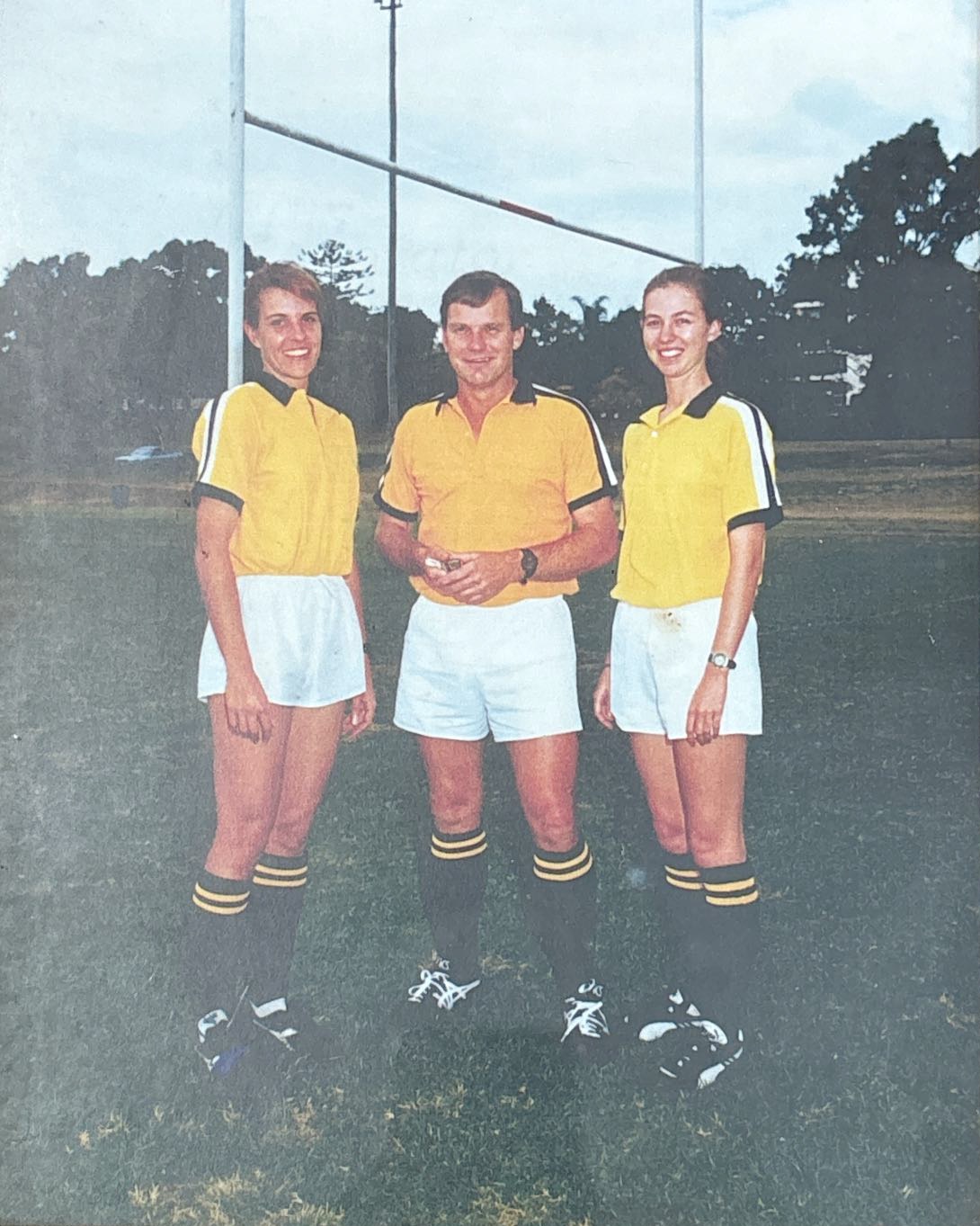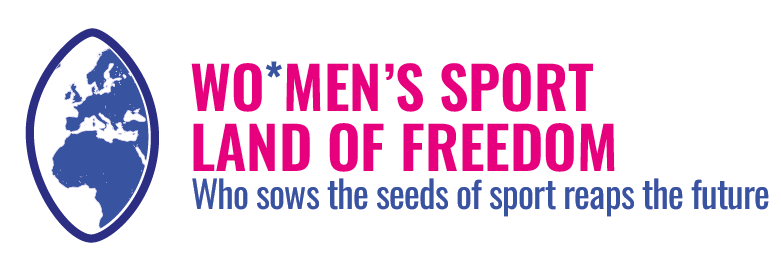
AUSTRALIA: I AM OFTEN THE ONLY WOMAN, BUT I STILL HAVE A VOICE AT THE TABLE.
“I am often the only woman, but I still have a voice at the table”

Thanks to:
Elizabeth Nankivell
Referee and Past Vicepresident Queensland Province
- The history of the women’s movement in Australia
- Testimonials
- Reading time: 7 minutes
AUSTRALIA - Find out more
Australia is a parliamentary democracy and constitutional monarchy in Oceania, with about 26.9 million inhabitants in 2024 and a slight female majority. Women hold 44% of the seats in the House of Representatives and 56.6% in the Senate. Female participation in the labor force is 62.4% (compared to 70.8% of men), with progress in political representation and leadership roles, but persistent wage disparities.
(SOURCE: data.unwomen.org; World Bank Gender Data Portal; IPU Parline; Australian Bureau of Statistics)
HISTORY OF THE COUNTRY
1. When did the women’s rugby movement start in your country and what is its history? How is rugby structured in your country?
In Australia, women began forming rugby teams in isolated ways. For example, in Townsville in our first year (1992), we had no local teams to play against, but we found women 400 km away, in Cairns and Ingham, who formed a team. We would all travel together by bus and play away matches. Interestingly, around the same time, women’s teams were being formed in universities and major cities across Australia. I believe we were all inspired by the 1991 Women’s Rugby World Cup to give it a try. 1992 was the first year a national women’s rugby competition was held in Australia, in the coastal industrial city of Newcastle, New South Wales. Teams from across the eastern seaboard were invited. City and club teams came from Townsville, Brisbane, and Sydney. I was one of three female referees at that tournament. I even refereed a game where I injured my iliotibial band (ITB) mid-match and fell to the ground—my father, also a referee, came off the sideline, took my whistle, and finished the game for me. I think that might have been the first ever father-daughter referee combination in a rugby match! The history of women’s rugby in Australia has sometimes been complicated, often depending on the support we received from men already involved in the game. That determined whether we had access to pitches, referees, equipment, and backing. Some clubs started women’s teams in the early to mid-1990s but folded when key individuals left. However, we are now seeing a revitalization: clubs that once started and stopped now have both women’s and girls’ teams to meet growing demand. In 1993, the Australian Women’s Rugby Union was officially founded, and the name “Wallaroos” was chosen for the new national women’s team. Joan Forno was the founding president of women’s rugby in Australia, and we owe her so much. In 1994, the Wallaroos played their first test match against the Black Ferns in Sydney. It was the first official test for the women’s national team, and a truly memorable event. In 2024, many past and present players commemorated the 30th anniversary of that match. Women’s rugby is now the fastest-growing area of the game in Australia. We have a large number of clubs with youth and senior competitions, in both 7s and 15s formats, and strong representative pathways. In 2019, women represented about 27% of all rugby participants nationwide.
2. Do you think playing rugby has a social impact for a woman in your country?
Absolutely. The Australian women’s rugby sevens team’s victory at the 2016 Rio Olympics really boosted the profile of women’s rugby, both 7s and 15s, across Australia. Rugby’s inclusion as an Olympic sport brought significant funding and the first full-time professional female athletes. We have exceptional role models in our sevens squads, players who give so much both on and off the field. With the recent introduction of the WXV, we’ve also seen major changes in resources allocated to women’s rugby. The Wallaroos now finally have a full-time paid head coach (though the players themselves are still not yet fully professional). This change is entirely due to WXV, a groundbreaking competition introduced by World Rugby that must continue, as it provides top-down momentum and ensures high-quality competition. At youth level, we are witnessing strong growth in all-girls and mixed teams across the country, with more tournaments and representative pathways for every age group. This grassroots momentum has been incredible to watch.
3. In your opinion, what can rugby give to women in your country?
Rugby is not just about playing: it gives women the power to push boundaries, defy expectations, and create lasting change. And it is also incredibly fun. Rugby is the perfect training ground for leadership and offers a supportive community for women and girls. It encourages women to have a go and to believe in themselves in contact sports. It is a game that suits all body types and heights. It’s exciting, and World Rugby’s core values—teamwork, respect, enjoyment, discipline, and sportsmanship—shine strongly. These values prepare you for life. One of the things I love most about rugby is how international it is. In Australia, we have people with backgrounds from so many different nationalities. Rugby’s culture is extraordinary—it fosters camaraderie and breaks down barriers between cultures, backgrounds, and experiences. Rugby gives women a “social license” in sport, and that is incredibly valuable in Australia.
JOURNEYS THROUGH RUGBY
1. When did you start playing rugby?
When someone says: “Hey, why don’t you come and try rugby?” — say yes. It was only when I played my very first match that I understood… Erica, you know what I mean. That first contact—the adrenaline of a contact sport is indescribable. At university, during exam periods, it was fantastic to play because you could release all the stress and anxiety.
2. What has rugby taught you that has impacted your daily life? Can you give me an example of when a rugby mindset was useful?
I grew up as the only girl in my family… even at home I was the only woman. I go to work—the same thing. I go to rugby—and sometimes I’m the only woman there too. I hardly even notice it anymore; I’m comfortable with it. I think part of that confidence comes from the skills I learned as a referee in rugby. I often walk into a meeting and I might be the only woman in the room. But I hardly notice—and I still have a voice at the table. I can communicate what I want both in my professional and personal life.
3. Can you give me three words that connect rugby with freedom?
Freedom is: body acceptance, inclusivity, and space for everyone.
4. What does living in a land of freedom mean to you?
I’ve brought you my old referee’s whistle. It was my father’s whistle. Referees often use an Acme Thunderer—a very popular whistle brand. This was one of his, and I used it for a long time when refereeing. There’s even a piece of old calico he gave me—I still keep it.
5. What object represents you and why? What is an aphorism that guides your life?
One simple motto: “Never, never, never give up.” But I’ll also read you one that I find particularly meaningful. It’s from Brené Brown: “Authenticity is the daily practice of letting go of who we think we’re supposed to be and embracing who we are. It’s the choice to show up and be real, the choice to be honest, the choice to let our true selves be seen.” I really like this because it is authentic, it is honest, and it is true.
